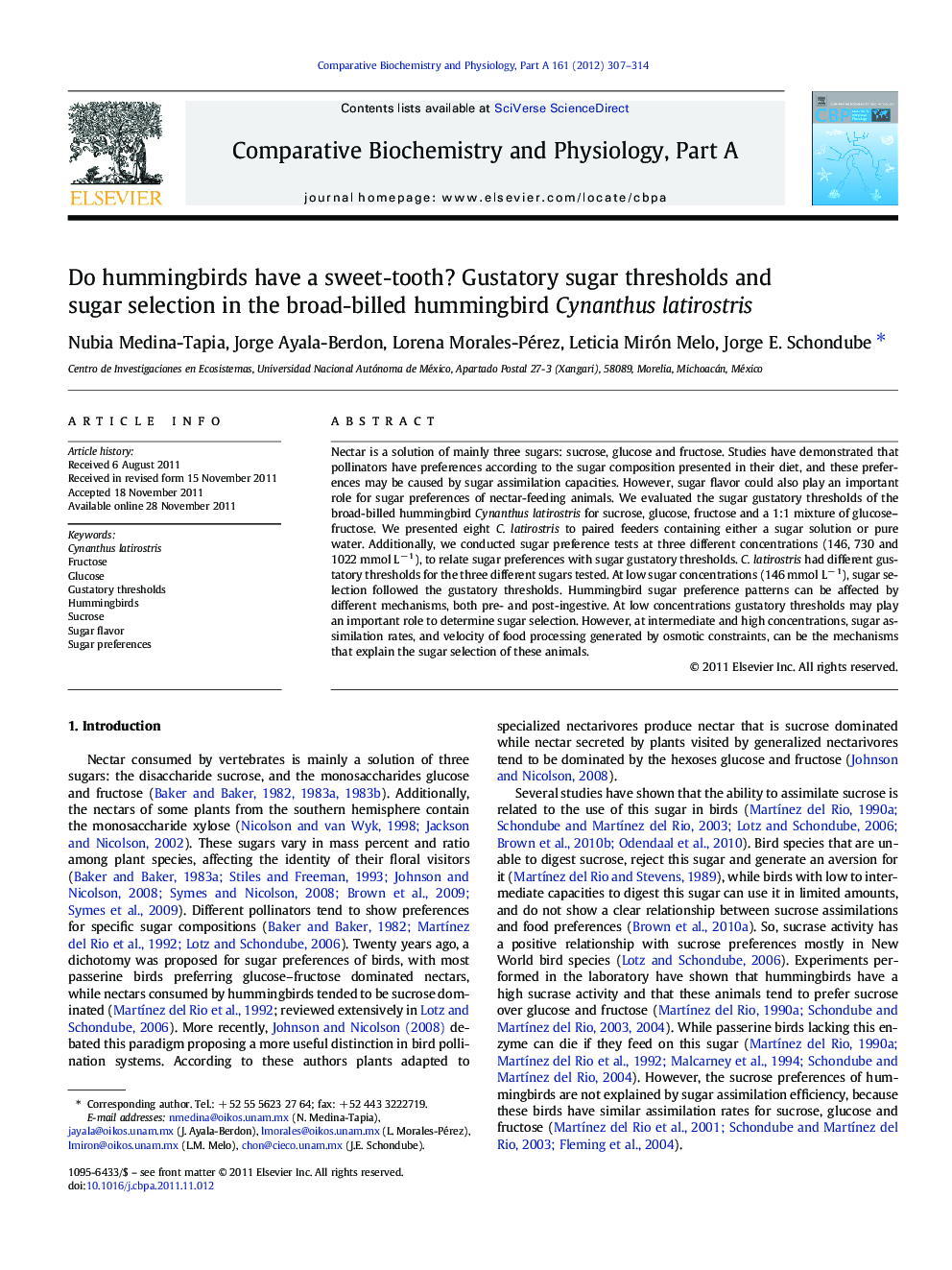| Article ID | Journal | Published Year | Pages | File Type |
|---|---|---|---|---|
| 1972772 | Comparative Biochemistry and Physiology Part A: Molecular & Integrative Physiology | 2012 | 8 Pages |
Nectar is a solution of mainly three sugars: sucrose, glucose and fructose. Studies have demonstrated that pollinators have preferences according to the sugar composition presented in their diet, and these preferences may be caused by sugar assimilation capacities. However, sugar flavor could also play an important role for sugar preferences of nectar-feeding animals. We evaluated the sugar gustatory thresholds of the broad-billed hummingbird Cynanthus latirostris for sucrose, glucose, fructose and a 1:1 mixture of glucose–fructose. We presented eight C. latirostris to paired feeders containing either a sugar solution or pure water. Additionally, we conducted sugar preference tests at three different concentrations (146, 730 and 1022 mmol L− 1), to relate sugar preferences with sugar gustatory thresholds. C. latirostris had different gustatory thresholds for the three different sugars tested. At low sugar concentrations (146 mmol L− 1), sugar selection followed the gustatory thresholds. Hummingbird sugar preference patterns can be affected by different mechanisms, both pre- and post-ingestive. At low concentrations gustatory thresholds may play an important role to determine sugar selection. However, at intermediate and high concentrations, sugar assimilation rates, and velocity of food processing generated by osmotic constraints, can be the mechanisms that explain the sugar selection of these animals.
